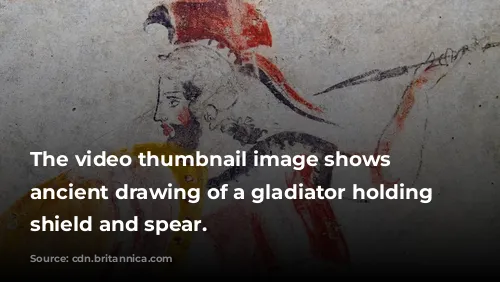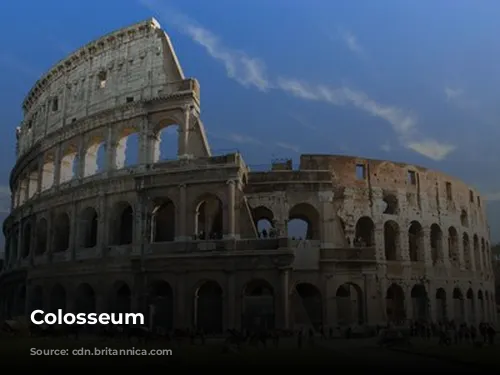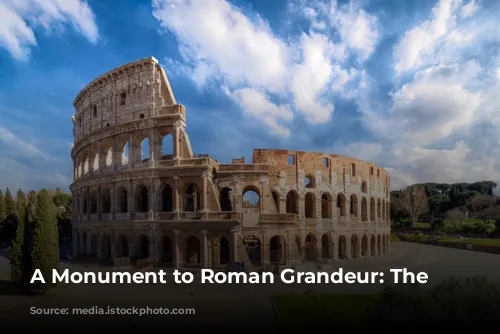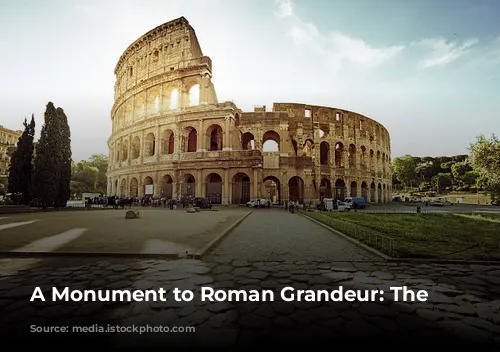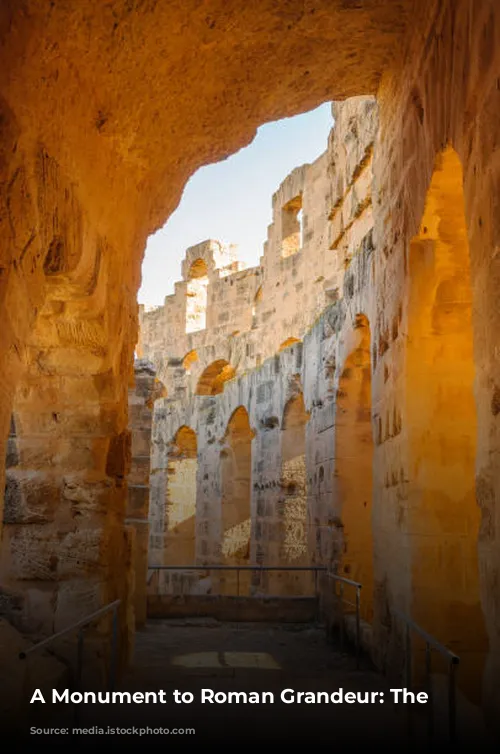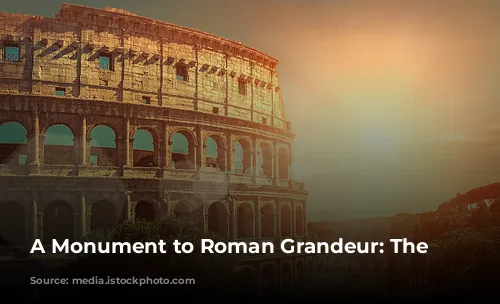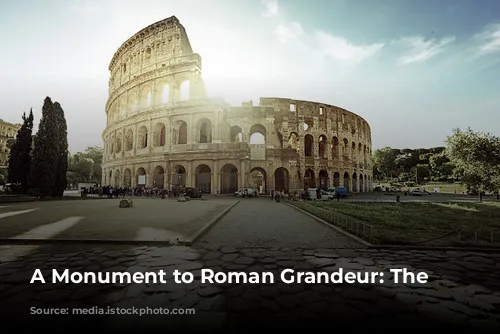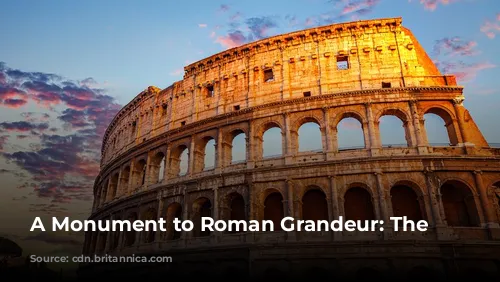The Colosseum, a towering testament to Roman ingenuity, stands proudly as one of the few mostly intact structures from the Roman Empire. It’s not only a marvel of ancient architecture and engineering but also a major economic driver for Italy, attracting millions of tourists each year. In 2018 alone, the Colosseum, Roman Forum, and Palatine Hill generated over $63.3 million (€53.8 million) in revenue, making it the top tourist attraction in Italy.
This iconic landmark has witnessed a rollercoaster of fortunes throughout history. After the fall of the Western Roman Empire, the Colosseum fell into disrepair, its grandeur gradually fading. In the 12th century, powerful families, the Frangipane and Annibaldi, repurposed the arena as their fortress, transforming this symbol of Roman power into a defensive stronghold. This period saw the Colosseum being utilized for purposes far removed from its intended function, reflecting the changing times and the shifting power dynamics of the city.
The 15th century brought a new era of neglect, with Pope Alexander VI permitting the Colosseum to be used as a quarry, essentially stripping the once-majestic structure for its building materials. After over a thousand years of neglect, the Colosseum faced a bleak future. Thankfully, state-funded restoration efforts began in the 1990s, breathing life back into this ancient giant and ensuring its survival for future generations.
A Legacy of Entertainment and Imperial Power
The Colosseum’s construction was part of a grand scheme by Emperor Vespasian to revitalize Rome following a tumultuous period. It was built as an entertainment venue, mirroring the tradition of amphitheatres across the Roman Empire, designed to host gladiatorial combat, animal hunts, and even mock naval battles. This immense structure was not merely a place of entertainment; it was also a symbol of Imperial power and a tool for diverting public attention from the political turmoil of the time.
The construction of the Colosseum began in 70-72 CE under the reign of Vespasian. His son and successor, Titus, dedicated the completed structure in 80 CE, marking a grand celebration of Roman power and a display of the imperial family’s generosity. The Colosseum’s fourth story was later added by Emperor Domitian in 82 CE, completing the imposing structure that stands tall today.
The Colosseum’s funding was as controversial as its purpose. It was funded by plunder from Titus’s sack of Jerusalem in 70 CE, further adding to the monument’s layered symbolism. The fact that it was built using enslaved Jews from Judaea serves as a reminder of the dark underbelly of Roman power and the exploitative nature of its empire.
A Colossal Structure of Stone and Concrete
The Colosseum is an elliptical amphitheatre, also known as the Flavian Amphitheatre, constructed entirely of stone, concrete, and tuff. It stands at a height of four stories, measuring an impressive 620 by 513 feet (189 by 156 meters) and capable of accommodating a crowd of up to 50,000 spectators. This colossal structure was built as a symbol of Roman power and a testament to their architectural prowess.
The Colosseum’s location was not a matter of chance. It was built just east of the Palatine Hill, on the site of Nero’s Golden House. This symbolic choice was made to replace Nero’s private lake with a public space for entertainment, a conscious effort by Vespasian to distance himself from his tyrannical predecessor and promote public unity.
The Colosseum’s design sets it apart from other amphitheatres. It’s a freestanding structure, unlike earlier amphitheatres that were often dug into hillsides. This unique design required the use of complex engineering techniques, including barrel vaults and groin vaults, which were essential for supporting the immense weight of the structure.
The Colosseum’s exterior is adorned with a rising arrangement of columns, showcasing the Doric, Ionic, and Corinthian orders, a design that heavily influenced Renaissance architecture. The structure’s walls are built with travertine for the main framework and facade, volcanic tufa for the secondary walls, and concrete for the inner bowl and arcade vaults.

A Stage for Bloodshed and Spectacle
The Colosseum wasn’t just a place for entertainment. It was a stage for spectacle and bloodshed, showcasing Roman brutality and the power dynamics of the empire. The amphitheatre seated 50,000 spectators, protected from the sun by a massive retractable awning called a velarium. This awning was supported by masts extending from corbels built into the Colosseum’s upper story, and required the strength of hundreds of Roman sailors to manipulate its rigging.
The Colosseum was the scene of gladiatorial combat, animal hunts, and even mock naval battles. These events, while entertaining, were often brutal, serving as a reminder of the empire’s power and the ruthlessness of its leaders. However, the authenticity of the legend that early Christians were martyred in the arena remains uncertain, a testament to the difficulty of verifying historical accounts.
From Glory to Neglect and Back Again
The Colosseum’s journey from glory to neglect and back again is a story of resilience and the enduring power of history. In medieval times, it was repurposed as a church, a stark contrast to its original purpose. The Frangipane and Annibaldi families later used it as a fortress, a testament to the changing power dynamics of the city.
However, the Colosseum’s fortunes took a turn for the worse. Lightning strikes, earthquakes, vandalism, and pollution damaged the once-majestic structure. The marble seats and decorative materials were stripped away, turning the Colosseum into a quarry for over a thousand years.
Preservation efforts began in the 19th century, spearheaded by Pope Pius VIII, and gained momentum in the 1990s with a dedicated restoration project. Today, the Colosseum stands as a testament to the power of preservation and the enduring allure of history. It attracts millions of visitors each year, drawn to its ancient grandeur and the stories it holds. Regular exhibitions showcase the culture of ancient Rome, keeping the spirit of this iconic landmark alive.
The Colosseum, a testament to Roman ingenuity, has endured the ravages of time and is now a symbol of human resilience. Its journey from glory to neglect and back again reminds us of the impermanence of power and the importance of preserving our cultural heritage. This ancient marvel continues to captivate and inspire visitors, offering a glimpse into the past and a reminder of the enduring legacy of the Roman Empire.
